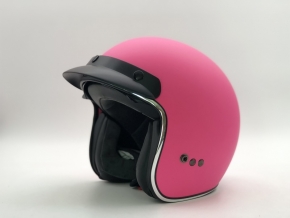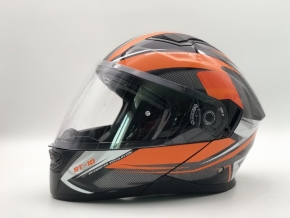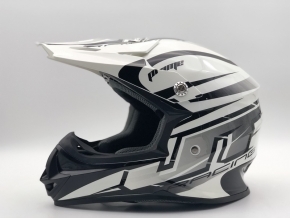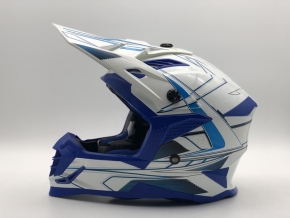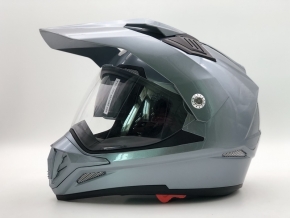1. The lighter the helmet, the better
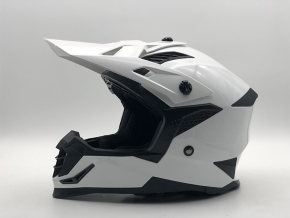
Relatively speaking, the lighter the helmet, the better. However, the lighter the riding helmet is, the less chance it will pass the national safety certification test standard, and the higher the relative price will be. Therefore, the prerequisite for choosing helmets is to pass the national safety certification test standards. Most helmets with more than 200 yuan can reach about 260G. This weight will not make you feel tired even if you travel a long distance, so you don't need to pay too much attention to the weight index of helmets. Unless you are for a bike race. Try to reduce the self weight, otherwise, it is not worth spending extra money to buy a lightweight helmet.
2. The larger or more holes in the helmet, the more ventilated
Breathability is the key to helmet, which can ensure your head is dry and cool during long-distance riding. The more or larger the ventilation holes on the helmet, the greater the airflow around your head, and the cooler you will feel. However, keep in mind that the more or larger the ventilation holes on the helmet, the more exposed your head will be, so the degree of protection will be reduced accordingly. Road bicycle helmets have more or larger ventilation holes than mountain bike helmets. Similarly, compared with mountain cyclists, road cyclists should consider the weight of helmets more. Generally speaking, the lighter the helmet is, the more expensive it is. Therefore, unless you want to reduce your self weight as much as possible for the purpose of cycling competition, otherwise, it is not worth spending extra money to buy an ultra light bicycle helmet.
3. Small buckles and tension straps are related to life. If buckles and tension straps cannot bear a certain force, they will break
You may only know that riding helmets need to do some impact tests, but buckles and straps also need to do corresponding tensile tests. If they do not pass the corresponding tensile tests, they cannot be used on helmets. Therefore, a qualified riding helmet, small buckles and straps must pass the corresponding tests before it can be regarded as a helmet that truly meets the national safety certification test standards.
4. Helmet cracked or expired
If it's cracked, don't use it. Wearing it is just a comfort to the heart, and it's not really useful. It doesn't matter if you bump or bump, but once you drop the car, you will not be able to protect it. Don't underestimate a crack, it has changed the force and component effect of the helmet in physical structure. Do you know why a bridge in Seoul collapsed in the 1990s? Later, it was inferred that it might be caused by the cracks that occurred because a certain welding point on one side of the bridge deck was not firmly welded. Instead of a simple principle, you can tear a brand new A4 paper from both ends with a little effort, but once you tear a small hole in the middle of the paper, it is easy to tear the paper.
Riders should replace their helmets every three years whether they have fallen or collided. Because, although the helmet has not been impacted, the sun exposure and sweat erosion will also make the helmet and some accessories aging, which will weaken the safety factor and damage the protective performance of the helmet.
5. Wear helmets without straps
It may be more comfortable to unfasten the jaw strap of the helmet, but if the head is hit, it will fly out easily, and naturally it will not play a protective role. Therefore, in order to play the protective role of helmet, please wear helmet and jaw belt at any time.
6. Wear a helmet that is too wide or too narrow
If the size of the helmet is incorrect, it will not protect your head from being hit. Don't make the mistake of buying an inappropriate size helmet. To determine the correct size of the helmet, first measure it around the larger part of the head (usually 1 cm above the eyebrows), and then purchase the helmet according to this measurement. Since helmets are often divided into small, medium and large sizes, you may only be able to buy a relatively appropriate size, and then use the size adjuster to rotate the button to adjust to achieve a more appropriate size. After wearing the helmet, turn the helmet from one side to the other, from the front to the back, and feel whether it is comfortable to wear. If it is too loose or too tight, it needs to be adjusted or replaced.
7. Using inferior helmets does not require certification in China
The manufacture of helmets has strict technical standards, and low-quality helmets often fail to meet the safety anti-collision standards, which will cause danger. Maybe many riders don't know how to know whether the helmet they bought is safe. In fact, it is impossible to determine whether the helmet is safe simply from whether it has the CE certification mark, but it must also have the corresponding test report and certification certificate. CE mark certification is the certification for specific products, focusing on the safety characteristics of products. It is the conformity certification reflecting the product's requirements for public safety, health, environment and personal safety.
So in China, does riding helmet not need certification? The answer is no. Before 2009, there was no complete standard for the safety of riding helmets in China. At that time, the Safety Requirements and Experimental Methods for Sports Helmets, Bicycles, Skateboards, and Roller Skating Helmets jointly drafted by Transrapid Helmets Co., Ltd. and some other enterprises were officially implemented in 2010, and then different versions of national standards appeared.
However, in China, most helmets are produced according to CE EN1078 standard. Because most helmet manufacturers in China are exporting more, helmets bought in the Chinese market are basically CE EN1078 standard. Some of them have affixed the CE mark, but they have not really been sent to TUV. SGS has carried out certification. Each product with different sizes should have corresponding test reports and certification certificates. Consumers must pay special attention to them. Helmets without safety certification are dangerous.
Therefore, helmets circulating in the Chinese market need not have CE marks, but also corresponding test reports and certification certificates to be considered as a truly qualified helmet.
8. Incorrect wearing position
For effective helmet position, the helmet and head should be kept level, and the edge of the helmet should be about 1cm above the eyebrows. If it is not in this position, check whether the size of the helmet is appropriate, and then adjust the adjuster knob and jaw strap to ensure that the helmet is worn in the correct position.
9. Lace up loose
The loose lacing makes the helmet jump and move at any time. When the head is hit, the second collision will reduce the protection effect. Therefore, it is necessary to adjust the length of the strap so that the distance between the strap and the chin is adjusted to a space between fingers, which can greatly improve the effective safety protection performance of the helmet.
10. Put the riding helmet after use
After each use of riding helmet, please put it in a cool and ventilated place to avoid high temperature or long-term sunlight.



